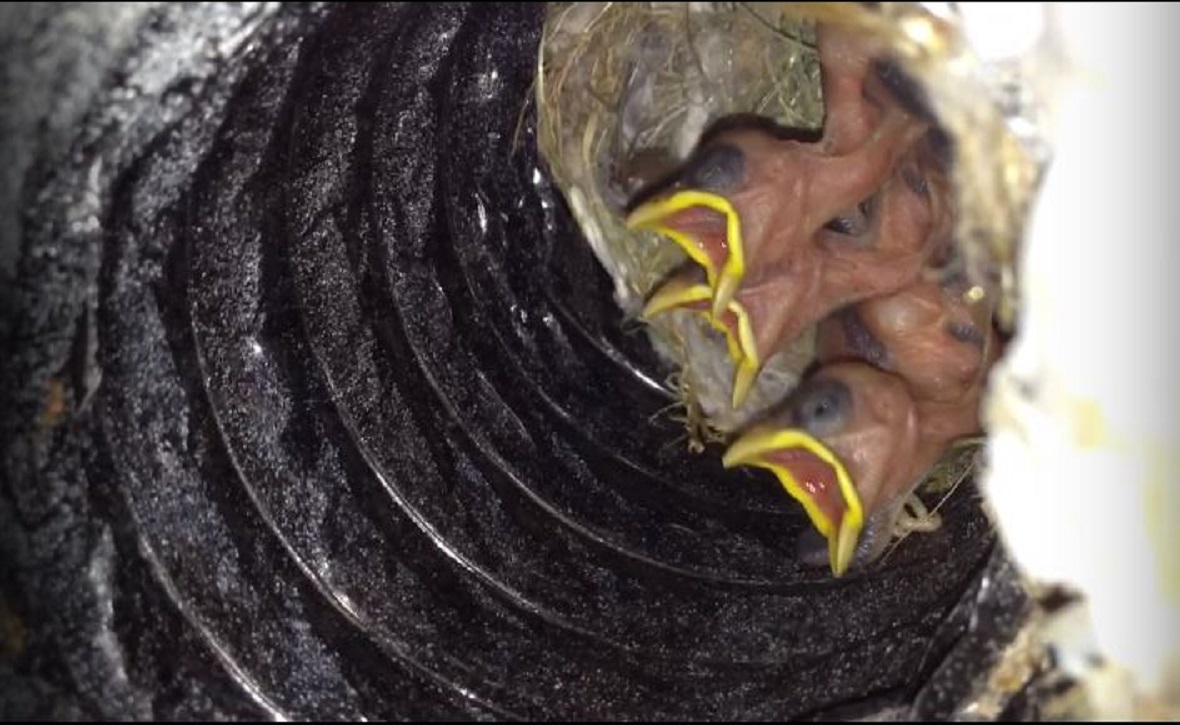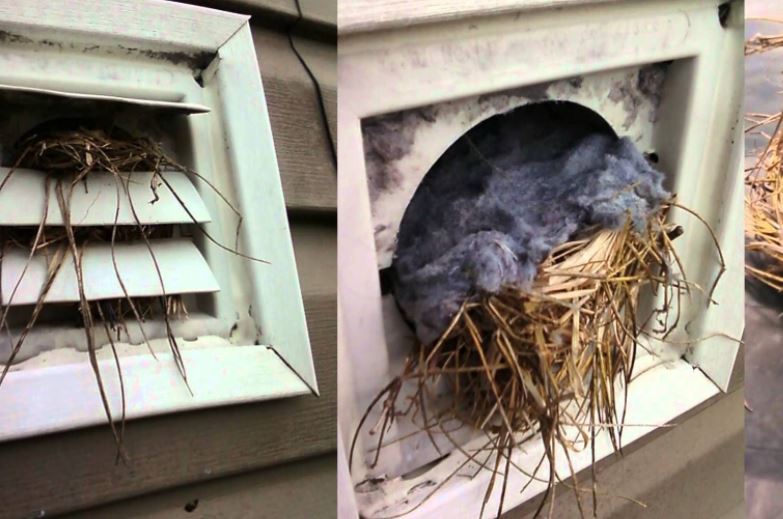Bird Behavior and Bathroom Exhaust Vents

Birds, with their innate curiosity and instinct to seek shelter, often find themselves drawn to bathroom exhaust vents. These vents, typically located on the roof or high up on the exterior wall, can seem like inviting havens, especially during inclement weather or when seeking a safe nesting spot. However, their presence in these confined spaces can lead to complications, raising concerns for both the birds and the homeowners.
Reasons for Entry
Birds are drawn to bathroom exhaust vents for a variety of reasons. They might be seeking shelter from harsh weather conditions, such as rain, snow, or extreme heat. The vent’s opening, often concealed within the roofline or siding, can offer a hidden entry point, providing a sense of security.
Additionally, birds might be attracted to the warmth emanating from the vent, especially during colder months. This warmth, a byproduct of the bathroom’s ventilation system, can create a comfortable microclimate within the vent, making it a tempting place to roost or nest.
Moreover, the vent’s location, often high above ground level, can provide a sense of security from predators. Birds might perceive the vent as a safe haven, free from the threat of ground-based predators like cats or snakes.
Potential Dangers
Birds trapped inside bathroom exhaust vents face a number of dangers. The confined space can limit their ability to move freely, leading to stress and exhaustion. The lack of access to food and water can quickly lead to dehydration and starvation. Additionally, the vent’s internal structure can pose a physical threat, with sharp edges or gaps that can cause injury.
Furthermore, the vent’s connection to the bathroom’s ventilation system can expose birds to harmful chemicals or fumes. The constant flow of air through the vent can also create drafts, making it difficult for birds to maintain their body temperature, especially during cold weather.
Signs of a Bird in the Vent
Several signs can indicate a bird is trapped in a bathroom exhaust vent. One of the most obvious signs is the presence of bird droppings or feathers near the vent’s exterior opening. The sound of chirping, fluttering, or other bird noises emanating from the vent can also be a telltale sign.
Additionally, a change in the bathroom’s ventilation system, such as a decrease in airflow or a strange odor, can indicate a bird is blocking the vent. If you suspect a bird is trapped, it’s important to contact a professional wildlife removal specialist.
Preventing Bird Entry, Bird in bathroom exhaust vent
To prevent birds from entering bathroom exhaust vents, several preventative measures can be taken. Installing a bird-proof vent cover is one of the most effective methods. These covers are typically made of metal or plastic and feature a mesh design that prevents birds from entering while allowing air to flow freely.
Regularly inspecting the vent for any gaps or openings can also help prevent birds from gaining access. Repairing any damaged or missing sections of the vent can ensure it remains sealed and secure.
Finally, keeping the surrounding area around the vent free of debris and potential nesting materials can discourage birds from establishing a presence near the vent. Removing potential attractants, such as food sources or open water sources, can further minimize the likelihood of birds being drawn to the area.
Removing Birds from Bathroom Exhaust Vents

Getting a bird out of a bathroom exhaust vent can be a challenging task, but with the right approach, it’s achievable. Patience and a thoughtful strategy are crucial to ensure the bird’s safety and your peace of mind.
Methods for Removing Birds from Bathroom Exhaust Vents
Choosing the right method depends on several factors, including the bird’s species, its location within the vent, and your comfort level with different approaches. Here’s a comparison of common methods:
| Method | Effectiveness | Potential Risks |
|---|---|---|
| Encouraging the Bird to Leave | Moderate, works best with young or inexperienced birds | May take time, bird may be distressed, and may not work for all species |
| Using a Bird Trap | High, particularly effective for catching small birds | Requires patience, potential for bird injury if trap is not used properly |
| Calling a Wildlife Removal Professional | High, experienced professionals have specialized equipment and knowledge | Can be expensive, may not be readily available in all areas |
Using a Bird Trap to Capture the Bird
Bird traps offer a humane and effective way to remove a bird from a bathroom exhaust vent. Here’s a detailed guide:
- Choose the Right Trap: Select a trap specifically designed for catching small birds. Look for a trap with a wide opening and a gentle mechanism to avoid injuring the bird.
- Bait the Trap: Use birdseed, mealworms, or other bird-friendly treats to attract the bird into the trap. Place the bait inside the trap and secure it to prevent it from falling out.
- Position the Trap: Place the trap near the exhaust vent opening, ensuring the bird has easy access to the bait. Secure the trap to prevent it from moving or falling.
- Monitor the Trap: Check the trap regularly to see if the bird has entered. If the bird is trapped, avoid making sudden movements that could frighten it.
- Release the Bird: Once the bird is trapped, carefully remove it from the trap and release it outdoors in a safe and quiet location away from your home.
Decision-Making Process for Choosing the Best Removal Method
[Flowchart Illustration]
The flowchart illustrates a decision-making process for choosing the best removal method based on factors like the bird’s species, location, and your comfort level.
Preventing Future Bird Entry: Bird In Bathroom Exhaust Vent

Once you’ve successfully removed the bird from your bathroom exhaust vent, the next crucial step is to prevent it from returning. This involves sealing any potential entry points and implementing measures to deter future intrusions.
Materials for Sealing Bathroom Exhaust Vents
Sealing your bathroom exhaust vent is essential to prevent birds from nesting inside. Various materials can be used, each offering different levels of effectiveness and durability.
- Metal Mesh: This is a popular and effective option for sealing bathroom exhaust vents. Metal mesh is durable, resistant to weathering, and can be easily cut to fit the vent opening. It’s available in different sizes, allowing you to choose the appropriate mesh for your vent. For optimal protection, use a mesh with smaller openings to prevent birds from squeezing through.
- Hardware Cloth: Similar to metal mesh, hardware cloth is made of galvanized steel and offers excellent durability and resistance to rust. It’s typically available in larger sizes, making it suitable for covering larger vent openings. Hardware cloth is also more robust than metal mesh, providing stronger protection against bird entry.
- Plastic Mesh: Plastic mesh is a more affordable option than metal mesh and hardware cloth. It’s lightweight and easy to install, making it a suitable choice for smaller vent openings. However, plastic mesh is less durable than metal options and may not withstand extreme weather conditions. It’s also less effective at deterring birds with strong beaks or claws.
- Caulk: Caulk can be used to seal gaps and cracks around the vent opening. It’s a cost-effective solution but may not be as durable as other materials. Caulk can also crack or become brittle over time, allowing birds to re-enter. It’s best used in combination with other sealing methods for maximum protection.
Installing a Bird-Proof Vent Cover
Installing a bird-proof vent cover is an effective way to prevent birds from entering your bathroom exhaust vent. These covers are designed with a mesh or solid barrier that prevents birds from entering while allowing air to flow freely.
- Choose the right cover: Select a cover that fits the size and shape of your vent opening. Ensure it’s made of durable materials like metal or plastic, and has a mesh or solid barrier to prevent bird entry.
- Remove the existing vent cover: If you have an existing vent cover, remove it carefully. You may need to use a screwdriver or other tools to loosen the screws or clips holding it in place.
- Install the bird-proof cover: Position the bird-proof cover over the vent opening. Secure it in place using the screws or clips provided with the cover. Ensure the cover is firmly attached to prevent birds from dislodging it.
- Check for gaps: After installing the cover, check for any gaps or openings around the edges. Seal any gaps with caulk or weatherstripping to ensure a tight fit.
Maintaining Bathroom Exhaust Vents
Regular maintenance of your bathroom exhaust vent can help prevent future bird entry.
- Clean the vent regularly: Dust, debris, and other accumulated material can create gaps and openings that birds can exploit. Clean the vent regularly to ensure it remains free of obstructions.
- Inspect for damage: Check the vent cover and surrounding areas for any damage or signs of wear and tear. Replace damaged components promptly to prevent birds from gaining access.
- Trim surrounding vegetation: Birds often use branches and foliage to perch and access vents. Trim back any trees or shrubs near your bathroom exhaust vent to discourage birds from using them as launching pads.
Regular Inspections
Regular inspections of your bathroom exhaust vent are crucial to identify potential entry points for birds.
- Visual inspection: Regularly inspect the vent cover, surrounding areas, and any gaps or cracks for signs of bird activity. Look for feathers, droppings, or any evidence of nesting materials.
- Listen for sounds: Pay attention to any unusual noises coming from the vent, such as chirping, flapping, or scratching. These sounds may indicate the presence of birds.
- Check for air flow: Ensure the vent is functioning properly and that air is flowing freely. A blocked or obstructed vent can create conditions that attract birds.
Bird in bathroom exhaust vent – A bird in your bathroom exhaust vent can be a nuisance, but it’s important to remember that these vents are often connected to your plumbing system. If you’re concerned about the bird’s safety, you might want to consider using a bathroom stall door lock hardware to secure the vent access point.
This will help prevent the bird from getting into the vent in the first place, and it will also keep any unwanted critters out of your plumbing system.
A bird trapped in your bathroom exhaust vent can be a frustrating situation, but before you start disassembling your ceiling, consider the airflow dynamics in your bathroom. The direction your bathroom door opens can significantly impact the air pressure within the room, which can influence how easily a bird might enter or exit the vent.
To better understand the interplay of air pressure and door direction, you might want to explore the intricacies of bathroom door open in or out and how it affects ventilation. Once you have a grasp of the air dynamics, you can more effectively address the bird in your bathroom vent.